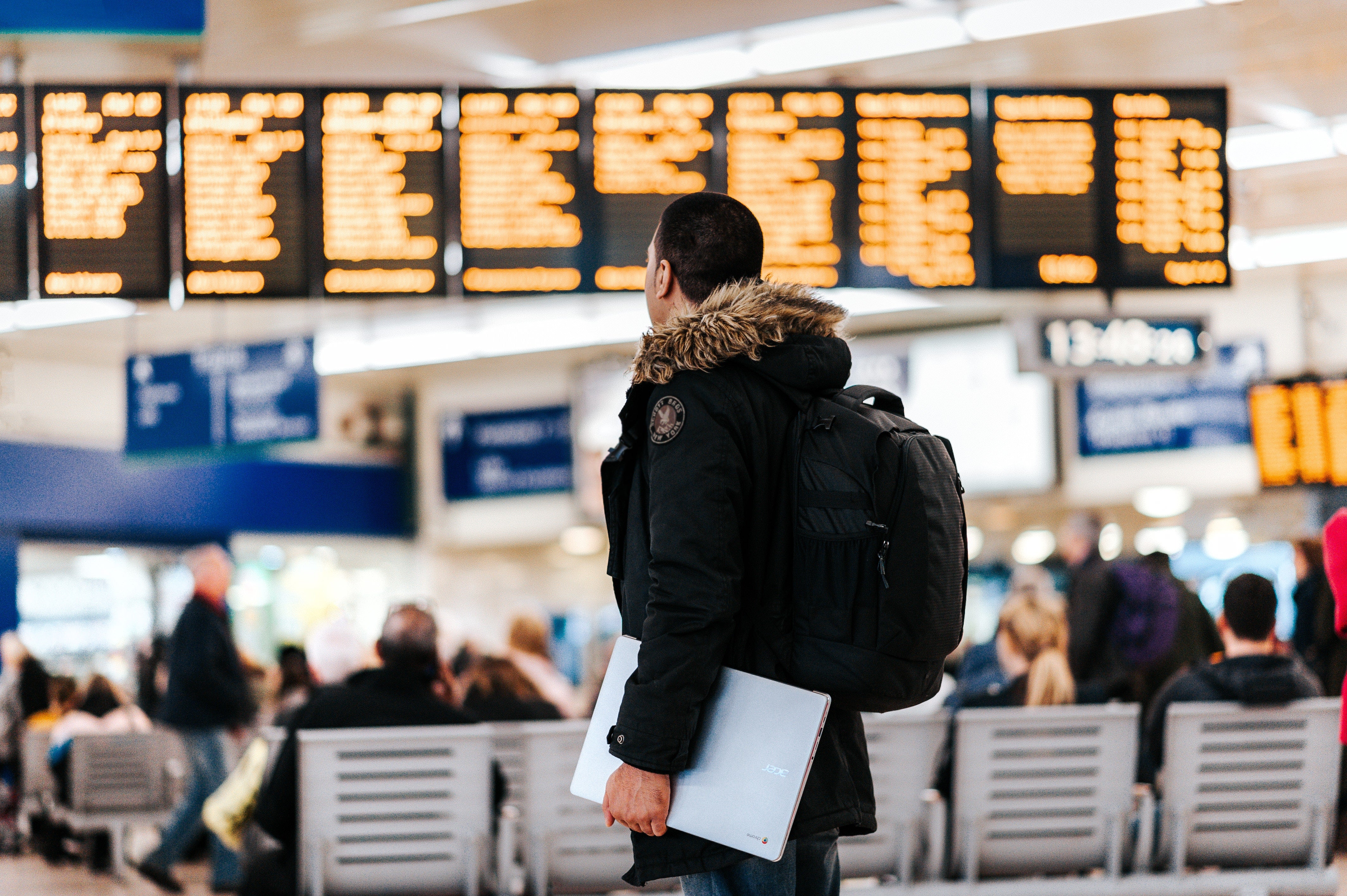
Travelling with Confidence: Your Guide to Taxes, Duties and Tariffs with wine
If you've ever thought about bringing wine home with you from a holiday or business trip, you've undoubtedly been confused at some point about allowances, taxes and duties to be paid. There's a lot of misleading information out there and thanks to these half-truths being passed on, I've met dozens of people who believe that you're only allowed to bring a bottle or two of wine back with you, and that it'll be incredibly expensive to do so. With that in mind, allow us to put you at ease and explain the process and the reasoning behind it, so you can travel with confidence and not worry about bringing back that beautiful case of wine. After all, half the fun of visiting a wine region is bringing back your favourite bottles with you!
With that in mind, let's break down these potential costs and see if there's anything to be worried about:
Importation Laws
So, we should start by pointing out the foundation of these taxes – any fees to be paid are due to the importation laws of the country you're entering. These laws exist to monitor international trade and maintain a balance. This also applies to wine being imported for commercial reasons, so when you buy a bottle of wine in your local store, part of that price is the tax, or the duty, that was levied. In other words; whether or not you buy wine at home or bring it with you, you have to pay duty. Ever wondered why the wine you're drinking at home is so much more expensive than you saw it in Spain? Tax often has a lot to do with that.
As these taxes mostly exist for commercial reasons, most countries have a 'duty-free' allowance that allows you to bring defined quantities of a product with you, without paying any fees whatsoever. This is often where the most confusion occurs: there are two very different allowances when bringing alcohol into a country:
1. The duty free allowance – This is the amount of alcohol that you're allowed to bring into a country without paying any additional fees. This can be as little as a bottle or two, all the way up to unlimited quantities and changes from country to country and even state by state in certain countries. This is not the maximum amount of wine you can bring into a country.
2. The overall allowance – This is the total amount of alcohol you're allowed to bring into a country as considered for 'personal use', which is defined by each country separately. This extra amount can be subject to duty fees and or taxes. We'll go through this in a little more detail in a moment.
So, you see that there's quite a big difference between the two. Unfortunately many people believe that the duty-free allowance is their total capacity and it's simply not true. It's well worth checking the rules and regulations for the country you intend to enter, but we'll explain some common scenarios below.
Declaration: It's worth noting that if you are over the duty-free allowance in any country, we always recommend that you declare yourself to customs. Failure to do so can incur spot penalties far greater than the small duty fees you would incur via declaration. It's even possible that these fees are waived as they're so low; the last time I brought wine back from Argentina to Spain (14 bottles in total, well above the permitted duty-free allowance) I received a shrug, a smile and a “Invitame a la fiesta!”, or “Invite me to the party!”.
Bringing Wine through Customs in:

USA
The USA consumes more wine than another other country in the world and every year explores more and more of its vinous wonders, with high quality wine bars, restaurants and retail outlets from New York to San Francisco. Add to the fact that Americans travel the world over, and you're going to see a lot of wine passing through customs!
Scenario: You're finishing a well deserved holiday in Tuscany where you've visited three separate, charming wineries and you've fallen in love with the delicious, Sangiovese blends on offer. One in particular stands out; a firm, tangy Chianti Classico made by a producer with no representation back home, and with not enough quantity to ever really be considered for importation. It's the wine that's punctuated the best evenings of your trip and you're set on bringing a case back with you. What are the potential costs?
Costs: Fortunately, the USA has very consumer friendly laws when it comes to the amount of alcohol you bring back with you, providing you're bringing it yourself. (another reason to consider travelling with wine instead of shipping it!). Typically most states allow 1-2 750ml bottles to be brought in duty free, and any wine thereafter will have a small amount charged as duty. Whilst this can differ by state to state, it generally sits somewhere between $0.35 and $2 per bottle. Through our personal experience and through the feedback of our many US clients 95% the time customs officers do not bother to bill travellers this duty as it's just not worth their time.
Other considerations: Costs seem to be the first thing that people worry about when transferring wine from point A to B, but in the case of bringing wine back to the US, it's really not a lot of money as you can see. Other things to be aware of are:
Age – You must be 21 years or older to bring back any alcohol beverage with you to the US. It doesn't matter if it's intended as a gift or not.
Personal use – The amount intended for 'personal use' is quite vaguely outlined in the US, but our customers have reported flying back with as many as 3 12-bottle wine suitcases (i.e. 36 bottles) per person, with no issues, so don't be overly nervous about it!
State variation – Owing to the US's complicated alcohol laws (thanks again, prohibition), it's a good idea to check your states tariffs and regulations before bringing alcohol in. Whilst the vast majority fall into the figures presented above, it makes sense to double check. All contact information can be found state by state here: https://www.ttb.gov/wine/state-ABC.shtml#US
Labeling - It seems like an odd thing to say, but any wine you bring back needs to be appropriately labeled. That means the clear, glass bottle with no information on it that the wine-maker made as an experiment might be forbidden from entering the country, as there's no information about its contents. An unlikely outcome, but we thought it best to let you know just in case!

Between EU Countries
Despite the rise of New World countries in the 20th century, Europe remains the heart of global wine production and it comes as no surprise that enotourism is booming here. It's long been a custom to drive around the continent and return home with a car full of goodies, so how does that look for wine?
Scenario: You've enjoyed a two week drive around France, and now you're returning home with your collected treasure, which includes around 24 bottles of various wines. There's some really lovely grower Champagne that you picked up in Epernay, a couple of delicious natural wines from that boutique in Paris and a whole treasure-chest of Alsatian white wines. It was a lot of fun, but what am I going to have to pay for all of it when I get back?
Costs: As far as alcohol tariffs go, it's good to be part of an EU zone! There are taxes to be paid on any alcohol considered above the amount for 'personal use'. The good news? As far as wine is concerned, each person has a duty-free limit of a whopping 90L or 120x standard 750ml bottles of wine! Anymore than this can be considered, I think with some justification, more than a standard amount for a single person!
Other considerations: There are really two things to be aware of when bringing wine between two EU countries:
Age – As with the US, only persons of legal drinking age may transport alcohol between countries. However, this is 18 years in the EU vs 21 for America.
Transportation - Wine you bring back from another EU member state must be transported by yourself to be exempt from duty and taxes. Shipping without an alcohol export license is generally illegal. This has long been misunderstood and has led to some rather hefty fees and fines for individuals shipping pallets of wine across borders as part of a 'group-buy' scheme. Fortunately, you're passing across the border with your own full Lazenne Wine Check, so no issues there!

Hong Kong
You might be surprised to hear that China is now the 3rd largest consumer of wine in the world! Even though they're well into the top 10 of domestic production, the thirst for fine wine is ever increasing in this vast country, so imports are essential. At this years Bordeaux En Primeur tastings, there was a large contingent of Chinese tasters and increasingly, there's a demand for high quality enotourism of Europe. So how does one go about bringing it back with you?
Scenario: You've visited Europe for the first time and fallen head-over-heels in love with Piedmont and the stunning, rolling hills of the Langhe. Nothing has quite captured your imagination like the heady scent of aged Barolo, and meeting the producers and their rustic, simple approach is something you desperately wish to share with your friends at home. How does bringing wine back to China work? Note that for the purposes of this example, we'll be considering Hong Kong as the vast majority of fine wine sales take place here. Mainland China has very different regulations which can be found: Mainland China Duties and Tariffs
Costs: There's more than one reason why Hong Kong is being increasingly considered the 'Fine Wine Capital of the World' and a big one is their non-existent tariffs on wine! Anything under 30% ABV, which is essentially every bottle of wine on the planet, doesn't attract on duty at all.
Other considerations: As with other countries, age is a factor when bringing alcoholic products with you and no-one under the legal age (18) may do so. Other than that, it's an incredibly easy place to transport wine. The only real danger is the danger fluctuations when shipping wine but... well, you know what we're going to say by now, don't you? Bring it with you!

So you see, for many countries around the world duty is nothing to be concerned about. There are indeed countries where tariffs on alcohol can be high, but as we discussed earlier, this is already contained within the price of the alcohol you're buying there anyway. The plus is that you get to bring back delicious wine that you may not be able to find at home, as well as the personal connection you bring with it. We hope this has cleared up any doubts and fears you may have had about the duties, taxes and allowances related to travelling with wine, and we wish you a safe journey and happy drinking!
For more information on travelling with wine, including more detailed information on allowances and tariffs by country, be sure to check out our complete guide to flying with alcohol: Flying with Alcohol 101



Leave a comment
This site is protected by hCaptcha and the hCaptcha Privacy Policy and Terms of Service apply.